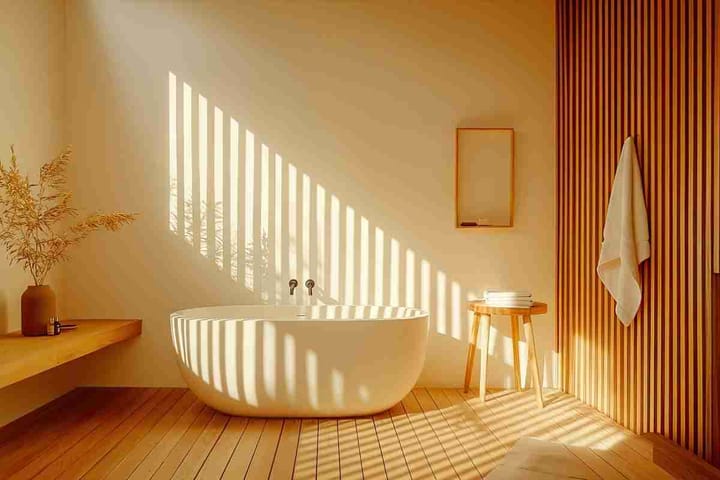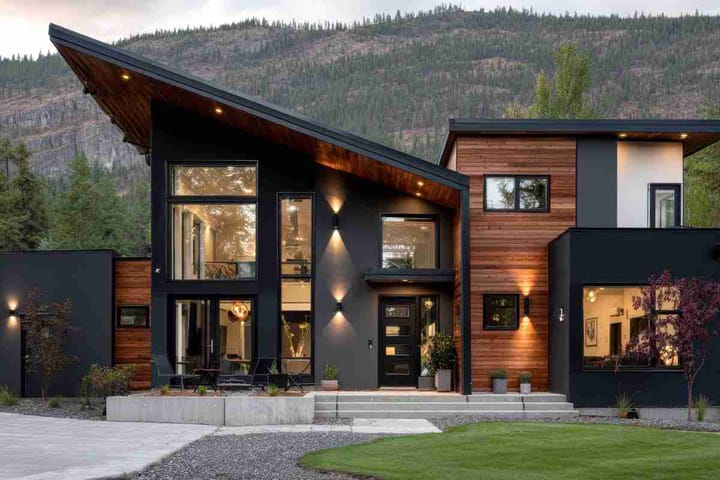A Complete Guide to Radiant Heat Panels - the Future of Home Heating
As technology evolves, so too does the way we heat our homes. Enter radiant heat panels, a sleek and efficient alternative to traditional heating systems.

Key Takeaways
- Radiant heat panels utilize far-infrared radiation to directly heat objects, eliminating the inefficiencies of conventional air-based and convection heating systems.
- Infrared heating panels provide greater comfort while using less energy than alternative heating options.
- Offering quiet operation and reduced allergen dispersion, radiant heat panels prioritize well-being, efficiency and health in modern living spaces.
As technology rapidly evolves, so too does the way we heat our homes. Enter radiant heat panels, a sleek and efficient alternative to traditional heating systems.
Unlike the older heating methods that rely on convective heat - warming the air which then warms objects in its path - radiant heat panels operate on a more direct principle.
Drawing an analogy, consider a clear winter day. While the air remains cold, the sun's rays provide a direct warmth.
In the same way, these panels radiate heat directly to objects and individuals in a room. This direct approach offers superior comfort and efficiency, often achieving cozy temperatures at lower settings.
How Do Radiant Heat Panels Work?
Radiant heat panels (aka infrared heating panels) utilize far-infrared radiation, a segment of the infrared spectrum, to emit waves that, when absorbed, produce heat.
Unlike traditional heating methods, these panels directly heat surfaces and bodies without primarily relying on the surrounding air.
These infrared heating panels are typically constructed from a highly emissive material, ensuring efficient heat radiation.
The inner workings involve electric currents passing through a conductive wire or foil, turning electrical energy into infrared radiation. The produced radiation then penetrates the air until it meets a solid object, where it gets absorbed and increases the object's temperature.
Radiant Heat Panels - Pros and Cons
Pros:
- Efficiency: Radiant heating offers energy-efficient comfort, allowing occupants to feel warmer even at lower air temperatures. For instance, if a room is at 18°C with radiant panels, it feels more like 21°C.
- Aesthetic Integration: Radiant heat panels integrate seamlessly with their environment or can even be cleverly concealed (ceiling-mounted, for example), enhancing the room's aesthetics.
- Silent Operation: Unlike many heating systems with moving parts, radiant panels operate silently.
- Hygienic: Due to minimal air movement, there's less dispersion of dust particles, making it an ideal choice not only for the home, but for places like offices, hospitals and schools as well.
Cons:
- Line of Sight: For optimum effectiveness, radiant panels require an unobstructed line of sight to the objects they're heating.
- Unsuitable for Larger Spaces: Whilst they are incredibly effective at what they do, radiant heat panels perform optimally in smaller rooms and spaces. Heating a larger, open space could require multiple panels, in which case you might be better served considering a radiant underfloor heating system.
Cost & Efficiency
When considering the adoption of any new technology in our homes, cost and efficiency are paramount. For many, these factors determine the feasibility of transitioning from conventional heating systems to more modern solutions.
Furthermore, there's potential for integration with alternative energy sources like solar panels and heat pumps, making them even more sustainable.
Let's delve into the cost and efficiency factors associated with radiant heat panels.
Initial Investment
The initial cost of radiant heat ceiling panels and wall panels might be higher than traditional heating methods - they typical range between $100 - 1899, with most reasonable . However, the pay-off comes in the form of their operational efficiency and potential long-term energy savings.
When integrated into a building's design, these panels can sometimes be less expensive than installing traditional heating methods.
Operational Efficiency
Unlike other heating systems that primarily rely on convection, radiant heat panels target objects directly, ensuring quicker and more uniform heating.
This reduces the time and energy needed to achieve a comfortable room temperature.
Energy Consumption
One of the most significant advantages of radiant heat panels is their lower energy consumption.
By providing heat directly to objects in a room, these panels don't waste energy heating the air, leading to reduced monthly bills.
For those concerned about their environmental footprint, this reduced energy consumption is an added bonus.
Maintenance & Longevity
While the initial cost might be a bit steeper, radiant heating panels come with minimal maintenance needs.
Unlike other systems, there aren't many moving parts, reducing wear and tear.
This not only brings down maintenance costs but also ensures that the panels last longer, giving you value for your investment.
Adaptable to Alternative Energy Sources
Radiant heating panels are versatile and can be paired with other green energy sources, such as solar panels and heat pumps.
This compatibility means that homes can further reduce their carbon footprint and energy costs.
FAQs
Are radiant heat panels worth it?
Absolutely! They offer efficient heating, are low-maintenance, and can save on monthly energy bills in the long run.
Additionally, they are hygienic, reducing allergens and dust in the air.
What size radiant heat panel do I need?
To select the appropriate size, calculate the area of the space in square feet and opt for a panel that offers sufficient coverage.
Ceiling height, the presence of windows, and the quality of insulation will influence the size and/or number of panels required.
Do radiant heaters use a lot of electricity?
No, radiant heaters are generally efficient in their electricity use, especially since they achieve comfort levels at lower air temperatures.
However, the exact consumption depends on the model and usage.
Is radiant heat expensive monthly?
The monthly costs can be lower than traditional convectors since comfort is achieved at lower temperatures.
This means less energy is consumed, leading to potential savings on monthly bills. Of course, this is heavily influenced by current electricity prices in your area.
Final Thoughts
Radiant heat panels stand out as a beacon of innovation in home heating solutions. With unmatched efficiency, aesthetic superiority, and a commitment to sustainable energy use, they truly represent the future of home heating.
As more homeowners become aware of the benefits and versatility of electric radiant heat panels, it won't be surprising to see them becoming the default choice for both new constructions and retrofitting projects.




Comments ()